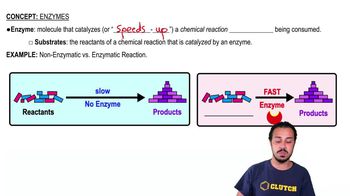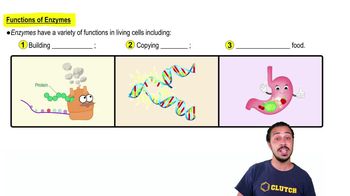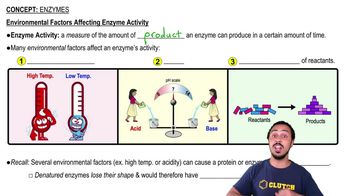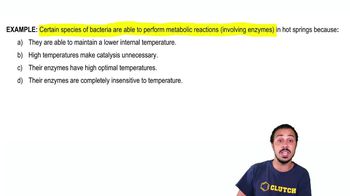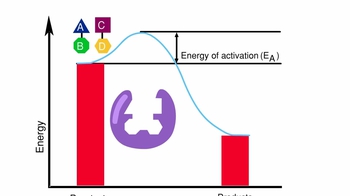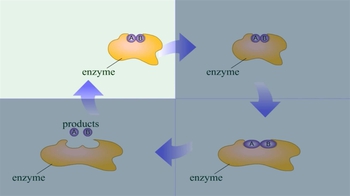7. Energy and Metabolism
Enzymes
Learn with other creators
Practice this topic
- Multiple Choice
Which of the following are examples of the functions of enzymes?
a) A lactase enzyme breaking down lactose sugar in the small intestine.
b) A DNA polymerase enzyme synthesizing new strands of DNA.
c) A lipase enzyme breaking down fats (lipids) in the small intestine.
d) A helicase enzyme unraveling DNA so it can be replicated.
e) All of the above.
- Multiple Choice
Which characteristics are likely associated with an enzyme isolated from a human stomach where conditions are strongly acidic.
a) An enzyme that functions properly at 70 degrees Fahrenheit and at a neutral pH.
b) An enzyme that functions properly at 98 degrees Fahrenheit and at an acidic pH.
c) An enzyme that functions properly at 98 degrees Fahrenheit and at a neutral pH.
d) An enzyme that functions properly at 70 degrees Fahrenheit and at an acidic pH.
- Multiple ChoiceWhich of the following is changed by the presence of an enzyme in a reaction? and
- Multiple ChoiceWhich of the following statements about enzymes is/are true?
- Open QuestionAdd labels to the figure that follows, which illustrates the breakdown of a disaccharide inside a cell.
- Open QuestionHow does pH affect enzyme-catalyzed reactions?a. Protons serve as substrates for most reactions.b. Energy stored in protons is used to drive endergonic reactions.c. Proton concentration increases the kinetic energy of the reactants, enabling them to reach their transition state.d. The concentration of protons affects an enzyme's folded structure and reactivity.
- Open QuestionWhich of the following is a false statement regarding enzymes?a. Enzymes are proteins that speed up metabolic reactions;b. Enzymes have specific substrates;c. Enzymes supply ATP to their substrates;d. An enzyme may be used many times.
- Open QuestionIf an enzyme in solution is saturated with substrate, the most effective way to obtain a faster yield of products is toa. add more of the enzyme.b. heat the solution to 90°C.c. add more substrate.d. add a noncompetitive inhibitor.
